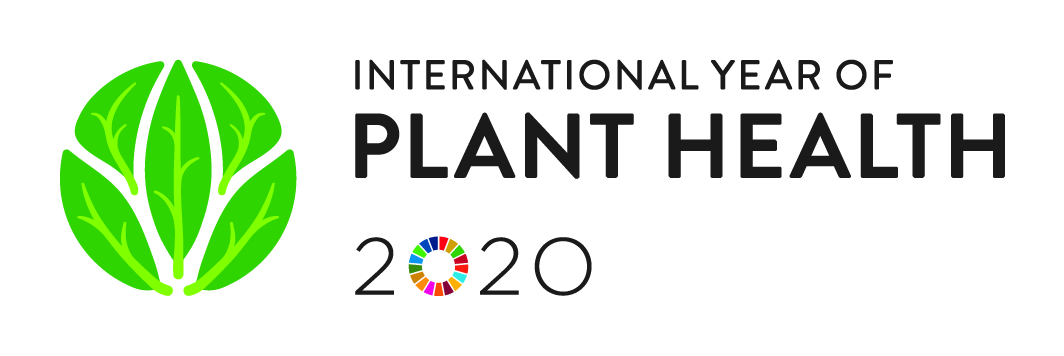
The United States, Canada, and Mexico share a common problem: Invasive plant pests don’t respect the international borders of North America. A pest in one country could pose a threat in all three—unless the three nations work as partners. So they joined their scientific, technical, and financial resources to prevent the introduction and spread of plant pests from the entire North American region. In 1976, they created the North American Plant Protection Organization (NAPPO).
Its goal is to promote and secure cooperation to protect plant health in North America.
This article highlights NAPPO as part of our celebration of 2020 as the International Year of Plant Health. The goal of this once-in-a-lifetime opportunity is to raise awareness about the critical importance of plants, a precious resource for all of humankind.

Three Levels of Plant Protection: National > Regional > Global
National
Before we look at the regional level, we need to understand what’s going on at the national level. Every country has a national plant protection organization (NPPO). An NPPO represents its country’s interests in the international plant health (phytosanitary) arena. NPPOs are responsible for their countries’ import regulations and export certifications for plants, plant products, and other items that could introduce and spread plant pests. NPPOs also conduct domestic programs to prevent the further spread of invasive plant pests that have entered the country.
The NPPOs in North America are:
- United States: The Plant Protection and Quarantine (PPQ) program of the U.S. Department of Agriculture’s Animal and Plant Health Inspection Service
- Canada: Canadian Food Inspection Agency (CFIA)
- Mexico: The Plant Health Directorate of the National Service for Agri-Food Health, Safety and Quality, within the Secretariat of Agriculture and Rural Development / Dirección General de Sanidad Vegetal (DGSV) del Servicio Nacional de Sanidad Inocuidad y Calidad Agroalimentaria (SENASICA), Secretaría de Agricultura y Desarrollo Rural (SADER)
Regional

When countries in a region join forces to protect plant health, their NPPOs form a regional plant protection organization (RPPO). Some RPPOs develop plant health standards that protect the entire region from plant pest threats and facilitate safe trade. The United States, Canada, and Mexico formed NAPPO, North America’s RPPO. NAPPO is truly notable because it is the only RPPO in the world that also includes representatives from regional industry.
NAPPO serves as a unique forum for dialogue, early communications on emerging plant pest issues, and win-win problem solving among the three countries’ plant health authorities.
The organization shows the deep value of multilateral institutions in an interconnected, trade-oriented region—and world.
Through NAPPO, all three North American countries develop similar and consistent—or “harmonized”—regional standards and approaches for managing pest threats. This critical work facilitates the safe movement of plants and plant products into and within the region.
In fact, within the new United States-Mexico-Canada (USMCA) Agreement’s Sanitary and Phytosanitary (SPS) Chapter, NAPPO continues to be recognized in its role as the regional plant health standard setting and reference body for North America. This was also the case under the North American Free Trade Agreement.
Over the years, NAPPO has developed numerous science-based regional standards that support efficient commerce while protecting against the introduction and spread of potentially damaging pests in the region. These standards have helped inform and shape important global plant health standards related to pest risk analysis, pest-free areas, wood packaging materials, and irradiation as a phytosanitary treatment, among others.
NAPPO’s work involves regional government officials, plant health regulators, scientists, and industry representatives from both inside and outside the NAPPO region. NAPPO is committed to building essential relationships based on common plant protection goals. These relationships are crucial to effectively address pests that threaten North American agriculture, horticulture, forests, and other natural resources. They are also necessary if we are to realize our shared vision of a safe, fair, and predictable trade system, regionally and globally.
In addition, NAPPO encourages phytosanitary conversations covering the entire Western Hemisphere to identify and support common interests and resolve differences. NAPPO actively participates in the Inter-American Coordinating Group in Plant Protection, which also includes the four other RPPOs in the hemisphere.
Global

International plant protection is possible thanks to the United Nations’ International Plant Protection Convention (IPPC). The IPPC is a multilateral treaty with 184 contracting parties. Its goal is to protect the world’s plant resources from the introduction and spread of pests and to promote safe trade.
The IPPC’s phytosanitary standards are based on the best science available. They provide the world with critical tools for negotiating technically sound international trade requirements. These standards provide the consistent approach that NPPOs should follow when regulating imports and ensuring safe exports to prevent the introduction and spread of plant pests through international trade.
Once they are adopted internationally, IPPC standards become the legal benchmarks and globally recognized source of guidance for trade in plant commodities under the World Trade Organization’s Agreement on the Application of Sanitary and Phytosanitay Measures (SPS Agreement).
RPPOs like NAPPO help their member countries meet the objectives of the IPPC such as reporting pests, disseminating information, and supporting activities to develop and implement international standards for phytosanitary measures.
The IPPC recognizes the RPPOs, which include NAPPO and nine others:
- Asia and Pacific Plant Protection Commission (APPPC)
- Caribbean Agricultural Health and Food Safety Agency (CAHFSA)
- Comunidad Andina (CAN) (Andean Community)
- Comite de Sanidad Vegetal del Cono Sur (COSAVE)
- European and Mediterranean Plant Protection Organization (EPPO)
- Inter-African Phytosanitary Council (IAPSC)
- Near East Plant Protection Organization (NEPPO)
- Organismo Internacional Regional de Sanidad Agropecuaria (OIRSA)
- Pacific Plant Protection Organization (PPPO)
Learn How NAPPO Protects Plant Health Regionally
For the International Year of Plant Health, NAPPO will feature many of its ongoing plant protection initiatives. Stay tuned for more articles!